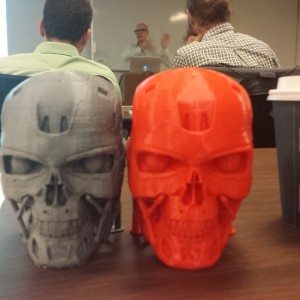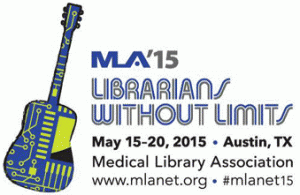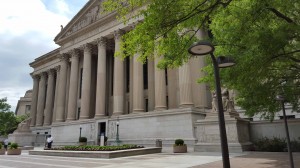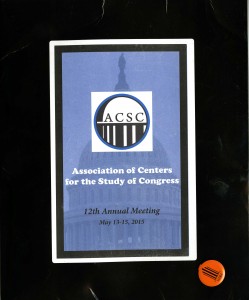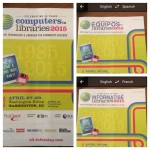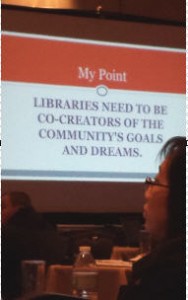The ALCTS Role for the Professional Librarians in Technical Services Interest Group held their biannual program at the American Library Association Midwinter meeting in Boston, MA on Saturday January 9th from 10:30 am EST to 11:30 am EST. The structure of the program consisted of two presentations followed by a guided discussion. Three questions were prepared in cooperation with the presenters and shared with the audience at the beginning of the program. Those questions were: (1) What one thing do you think you can help staff accept change and collaboration?; (2) How have you encouraged colleagues to self-identify by skills and abilities rather than job title?; (3) What are obstacles and opportunities in creating a learning environment focused on growth?. The guided discussion also included the opportunity for the audience to ask direct questions to the presenters. The slides can be found online at: http://connect.ala.org/node/66069.
Solution Creators: Enabling Innovation in Technical Services Departments
The first speaker was Sally Gibson, Head of Cataloging, Acquisitions, and Processing at Illinois State University (ISU). Sally explained that she has been at ISU for two years and experience ISU’s landscape as a changing one. There has been reduction of silos, more focus on collaboration, more outsourcing, and adoption of how to add value to services. The biggest question faced with outsourcing as stated by Sally Gibson was: “What are the routine tasks to outsource?” This question lead to digger deeper into how routine tasks can be less onerous or be done by less people. These were hard questions to ask but necessary when faced with budget restrictions and staff reductions. Sally noted that at the time of her presentation the state of Illinois had yet to pass the state budget. Despite that, the overall picture had to change from negative to positive. For this to happen, Sally advocated the need to focus on learning outcomes and solutions to problems instead of processes.
For technical services, this focus according to Sally revolves around a holistic view of solving problems collaborative. There is a tendency to emphasize the individual and an individual’s job title. This doesn’t allow for change and growth. Instead, centering on skills and abilities, staff can move forward. Further, a synergy of abilities and skills across units promotes collaboration. As such, functions and roles are valued and act as a bridge to understanding how tools work and can be adopted throughout the library. Another issue with focusing on titles rather than taking a more holistic view is that it displays a comfort level with a traditional approach.
Definitely, changing perspectives can be daunting and involves taking a risk with which many are not comfortable. Sally highlighted the importance of evaluating employee strengths and their comfort levels. Further, she noted the overarching significance in disseminating information and engaging in discussions throughout the library. Sally’s primary question was: Is your unit using an active learning environment that promotes growth? Sally defined growth as the desire to embrace challenges, an intelligence that can be developed, an open exchange of ideas, exploration, and the desire to understand the big picture, the holistic view. Furthermore and more importantly, a learning environment is one where every employee is valued.
A learning environment strives to overcome barriers exist. One obstacle is fear: fear of failure, sharing, risk, being wrong. Another is trust. Sally again brought out the positives in relation to fear and trust. It is crucial to integrate flexibility in the learning environment. Growth involves making mistakes. Instead of being punished for those, a learning environment learns from them integrating the flexibility needed to change course sometimes multiple times. Trust here is key as Sally clarified. It is through communication for example in a circle where curiosity, open discussions are key. By valuing the skills and abilities of employees, they begin to be empowered and look at solutions holistically.
Sally concluded that solution creators work in learning environment that supports growth. Solution creators recognize patterns and provide meaning. Everyone has a voice. Open discussion is valued. Questioning practice and procedures is encouraged. Skills and abilities are value and trust is key.
Technical Services Librarians as Factotum: The Reality in a Small Academic Library
The second and last speaker was Denise Garofalo, Associate Librarian, Systems and Catalog Services, Kaplan Family Library and Learning Center, Mount Saint Mary College. Denise began her presentation with a description of her library and her role. Mount Saint Mary College was founded almost 55 years ago. It is a small liberal arts college with approximately 1943 full time employees. The library used to be the mother house for the nuns and the Dominican center. The building included dormitory rooms on the upper floors. When the library moved in to the building, the dormitory rooms stayed meaning frequent visits of students in bathrobes. Recently, the library moved to electronic resources because of the demand of information literacy from faculty. The faculty’s response was so positive that the faculty begin to demand more information literacy courses. In fact, the information literacy program became a success.
Denise explained that the library was thrilled to have the support of the faculty at the same time of they wondered how to deal with the success. Denise took a step back to highlight three projects done in the library. These were a reclassification from Dewey Decimal Classification to Library of Congress classification, moving the library to the renovated new space, a the personal librarian project for 1st year experience students. These projects involved everyone in the library. From this experience, Denise began referring to employees as factotum or staff who do all kinds of work. A factotum do a little bit of everything. This is accentuated because the librarians at the Kaplan Family Library are also tenure track. Moreover, there are only 5 librarians, one for access, curriculum, reference, collection development, and technical services. All librarians have a heavy instruction load, must do work that involves processing, and of course work for tenure. The priority of the library is to keep it open and the staff resources are dedicated to doing this. As a result, technical services lost a processing assistant.
The conundrum was how to deal with the same workload and less staff in technical services. The issue was to ensure that processing of materials continued as normally as before. Denise said that they first solution was to hire work study students. Unfortunately, the students were not reliable and often unavailable during intersessions and breaks. The students also found the work boring and preferred to be moved to the circulation desk. It was necessary to look for a different solution with the knowledge that there was no funding to hire. Thinking outside the box wasn’t enough Denise stated. It was time to rethink the box entirely. Thanks to a recent library reorganization, an opportunity presented itself. The night supervisor needed more tasks. Access and technical services began a new collaboration building on the three projects from earlier. To help the night supervisor take on the skill of processing materials, tasks were accessed and procedures developed and redeveloped. Trainings in person and via documents with numerous pictures were used. Communication between both units and the library continued and the training refined. The collaboration was a success. The night supervisor now processing materials as well as supervising the night shift. The advantage of retraining the night supervisor is the person loves the work, isn’t bored, and feels engaged in the library beyond just a title of night supervisor.
Denise concluded that this experienced worked because of team work and a willingness to learn new skills. It is important to question procedures. Developing new skills needs to be offered to all employees. More importantly, it’s necessary to reflect, review while being flexible, receptive, and open.



